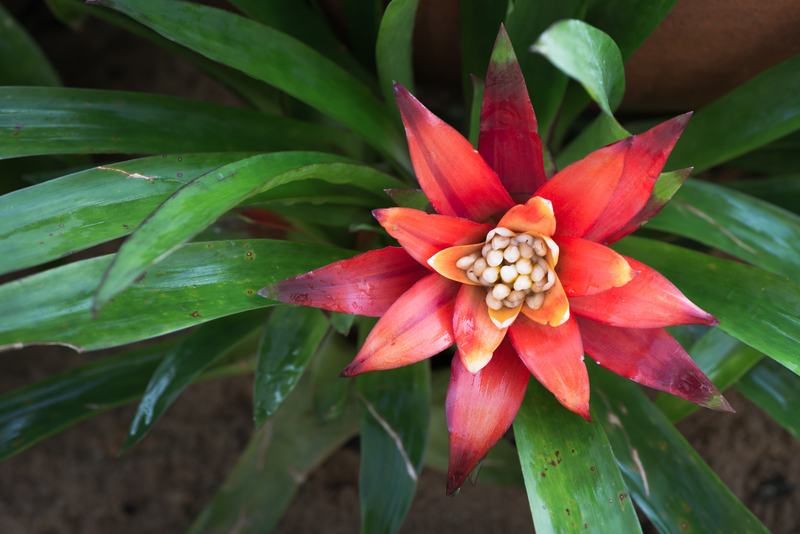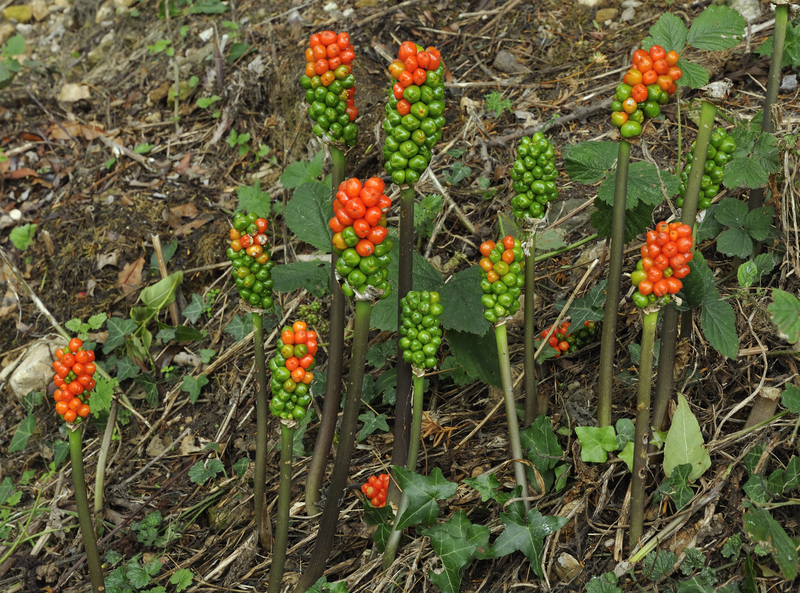Streamline Your Gardening with 3 Weed Control Tips
Posted on 16/06/2025
Streamline Your Gardening with 3 Weed Control Tips
Gardening can be a rewarding hobby that brings beauty, fresh produce, and a sense of tranquility to your daily routine. However, one of the most common frustrations faced by gardeners around the world is dealing with stubborn, unsightly weeds. These unwanted plants don't just ruin the appearance of your garden--they compete with your cherished plants for nutrients, sunlight, and moisture. To maintain a thriving garden, it's essential to implement efficient weed management strategies. In this comprehensive guide, we'll explore three weed control tips guaranteed to help you streamline your gardening efforts. Whether you are a beginner or an expert, these proven methods will help you save time, protect your plants, and ensure your garden remains neat and productive.

Why Effective Weed Control Is Crucial for Gardeners
Before we delve into the practical tips, it's important to understand why weed control is vital. Weeds aren't just a cosmetic issue; their presence can significantly impact your garden's health. Here's why controlling weeds efficiently is a major priority:
- Weeds deprive your plants of nutrients and water by absorbing essential resources before your flowers or vegetables can access them.
- Many weeds harbor pests and diseases that can quickly spread to your cultivated plants.
- Unchecked weeds can outcompete young seedlings, reducing your chances of a bountiful harvest or a beautiful flower display.
- Some weeds are invasive and, if left uncontrolled, can take over your garden rapidly.
With these negatives in mind, it's clear that an effective strategy is needed to keep your garden healthy and your workload manageable. Let's dive in!
Tip 1: Mulching - Your First Defense Against Weeds
What Is Mulching?
Mulching is the practice of applying a protective layer of material on the soil surface around your plants. This simple but powerful technique not only suppresses weed growth but also helps retain soil moisture, moderates temperature, and improves soil health.
How Mulching Controls Weeds
- The mulch layer blocks sunlight, preventing weed seeds from germinating or growing.
- Organic mulches (like straw, bark, wood chips, or compost) gradually break down and enrich the soil, improving structure and fertility.
- Inorganic mulches (such as landscape fabric or gravel) offer long-lasting weed control and are perfect for pathways or permanent plantings.
Steps to Mulch Effectively
- Clear the area of weeds before applying mulch. Removing existing weeds ensures they don't grow through your mulch.
- Choose the appropriate mulch type for your plants and location (wood chips for perennials, straw for vegetable beds, etc.).
- Apply a layer 2 to 4 inches thick. Too thin, and weeds may poke through; too thick, and it could affect water penetration.
- Keep mulch a few inches away from plant stems to prevent rot and provide airflow.
- Renew organic mulch annually as it decomposes, adding fresh material as needed for continued weed suppression.
SEO tip: Using mulch is one of the top weed management tips for keeping gardens weed-free. Incorporate mulching for gardening weed control that lasts all season.
Tip 2: Smart Planting Techniques for Natural Weed Prevention
Why Planting Density Matters
One of the proven gardening weed control strategies is closer plant spacing. Dense planting creates a living mulch by shading the soil and denying weeds the sunlight they need to thrive.
How to Optimize Planting for Weed Control
- Plan your garden beds with minimal empty space between plants. Check seed packet recommendations and plant accordingly.
- Intercropping (planting fast-growing crops like radishes between slower-growing plants such as cabbages) ensures soil is covered as much as possible.
- Groundcovers and spreading plants (like creeping thyme or sweet alyssum) can fill bare areas and keep weeds at bay.
- Use succession planting--after harvesting one crop, plant another quickly to keep soil covered year-round.
Companion Planting for Weed Suppression
Many gardeners use companion planting as a part of their weed control routine. For example, marigolds and nasturtiums not only deter pests but also compete fiercely with weeds. Strategic use of these plants amplifies your garden's natural weed resistance.
- Vigorous herbs like mint (in containers) and oregano can serve as living weed barriers along edges.
- Corn or sunflowers planted in blocks provide shade for soil, drastically cutting back on weed growth underneath.
With these smart planting strategies for weed prevention, you'll find your garden beds looking fuller and healthier, while also reducing your manual weeding workload.
Tip 3: Timely and Targeted Hand Weeding Methods
Why Hand Weeding Remains Essential
Despite the best preventative strategies, some weeds will inevitably make an appearance. Regular, targeted hand weeding remains a crucial weed management tip for every gardener. However, the trick is to weed efficiently and at the best times, rather than reacting to an overwhelming infestation.
Top Hand Weeding Tips for Streamlined Gardening
- Weed after rain or watering. Moist soil makes it easier to pull out weeds completely, roots and all.
- Target annual weeds before they go to seed. Preventing seed production is the best long-term weed control strategy.
- Use the right tools. A sharp hoe, dandelion digger, or hand fork can make weeding quicker and minimize disturbance to nearby plants.
- Stay on schedule. Set aside a few minutes each week to patrol your garden and remove young weeds before they establish deep roots.
- Dispose of pulled weeds properly. Don't leave them in the garden, or they may reroot or drop seeds.
Tip: Make a habit of walking through your garden regularly. A little weeding done frequently is much easier than battling an overgrown garden later in the season.
Bonus: Preventative Practices for Long-Term Weed Management
Along with the three core weed control techniques outlined above, incorporating a few additional habits can further streamline your gardening and maintain a weed-free landscape.
- Don't let weeds flower or seed. Remove weed flowers before they set seed to break the reproduction cycle.
- Edge your garden beds regularly to prevent grass and perennial weeds from creeping in.
- Install physical barriers, like landscape edging or deep-root borders, to block aggressive perennial weeds.
- Solarize problem areas by covering them with clear plastic for several weeks in hot weather. This technique uses the sun's heat to destroy weed seeds and roots in the topsoil.
- Limit soil disturbance. Tilling and digging can bring buried weed seeds to the surface. Disturb the soil only as much as necessary for planting.
By understanding and disrupting the weed life cycle, you'll create an environment where weeds are far less likely to appear or persist.
Common Weeds and Their Management
It can be helpful to learn to identify the most common weeds in your area, as well as specific removal methods. Here are a few examples:
- Dandelions: Deep taproots make them tough to pull. Use a dandelion digger and remove the entire root to prevent regrowth.
- Crabgrass: Pull before seedheads form, or apply mulch to suppress seedlings.
- Bindweed: Persistent, with spreading roots. Continually remove new growth and consider solarizing infested areas.
If you're struggling with a specific weed, research the best removal or management strategy tailored to that plant's life cycle.
Organic vs. Chemical Weed Control: Making the Right Choice
Many gardeners wonder whether to use chemical herbicides or stick with organic weed control methods like those described here. While herbicides can offer quick results, they come with risks:
- Chemicals may harm beneficial pollinators, insects, and pet animals.
- Drift can damage desirable plants or contaminate soil and water.
- Organic techniques (mulching, hand weeding, smart planting) build soil health and are safer for the environment and your family.
For most home gardeners, streamlined organic gardening practices provide sustainable, long-term weed management with fewer risks and more benefits.
Summary: Your Action Plan for Streamlined Weed-Free Gardening
- Start with mulch: Apply mulch to all exposed soil areas to naturally hinder weed growth.
- Plant densely and strategically to shade soil and crowd out weeds.
- Hand-weed regularly, focusing on young weeds and after rain for best results.
- Combine these tips with preventative practices for effective, ongoing garden weed control.
Gardening doesn't have to mean constant battles with weeds. By adopting these three streamlined weed control tips--mulching, smart planting, and timely hand weeding--you'll spend less time pulling weeds and more time enjoying your flourishing garden. These simple yet powerful strategies are your key to productive, low-maintenance gardening and will help you enjoy not only a weed-free garden but a more sustainable gardening lifestyle.

Frequently Asked Questions About Efficient Weed Management
What is the best mulch for weed suppression?
Organic mulches like bark chips, straw, shredded leaves, and composted manure are excellent for garden beds and vegetables. Inorganic mulches, such as gravel or landscape fabric, work best for walkways or permanent plantings. Always choose a mulch suitable for your plants and climate.
How often should I hand-weed my garden?
A quick weekly inspection and removal of young weeds is far more effective than periodic deep weeding. By catching weeds early, you prevent them from seeding and spreading.
Can I use boiled water or vinegar as natural weed killers?
Boiling water and horticultural vinegar can kill surface weeds, but they must be applied carefully to avoid harming desirable plants. These methods work best for cracks in paths or driveways, not within dense garden beds.
Final Thoughts: Transforming Your Weed Control Strategy
With these straightforward, highly effective weed control techniques for gardening, you can dramatically reduce your workload and increase your garden's beauty and productivity. Remember, the secret to weed-free, streamlined gardening lies in consistency and a proactive approach. Embrace mulching, smart planting, and timely weeding, and you'll set yourself up for gardening success all season long!
Streamline your weed management starting today and enjoy a lush, healthy garden with far less effort. Your plants--and your back--will thank you!

